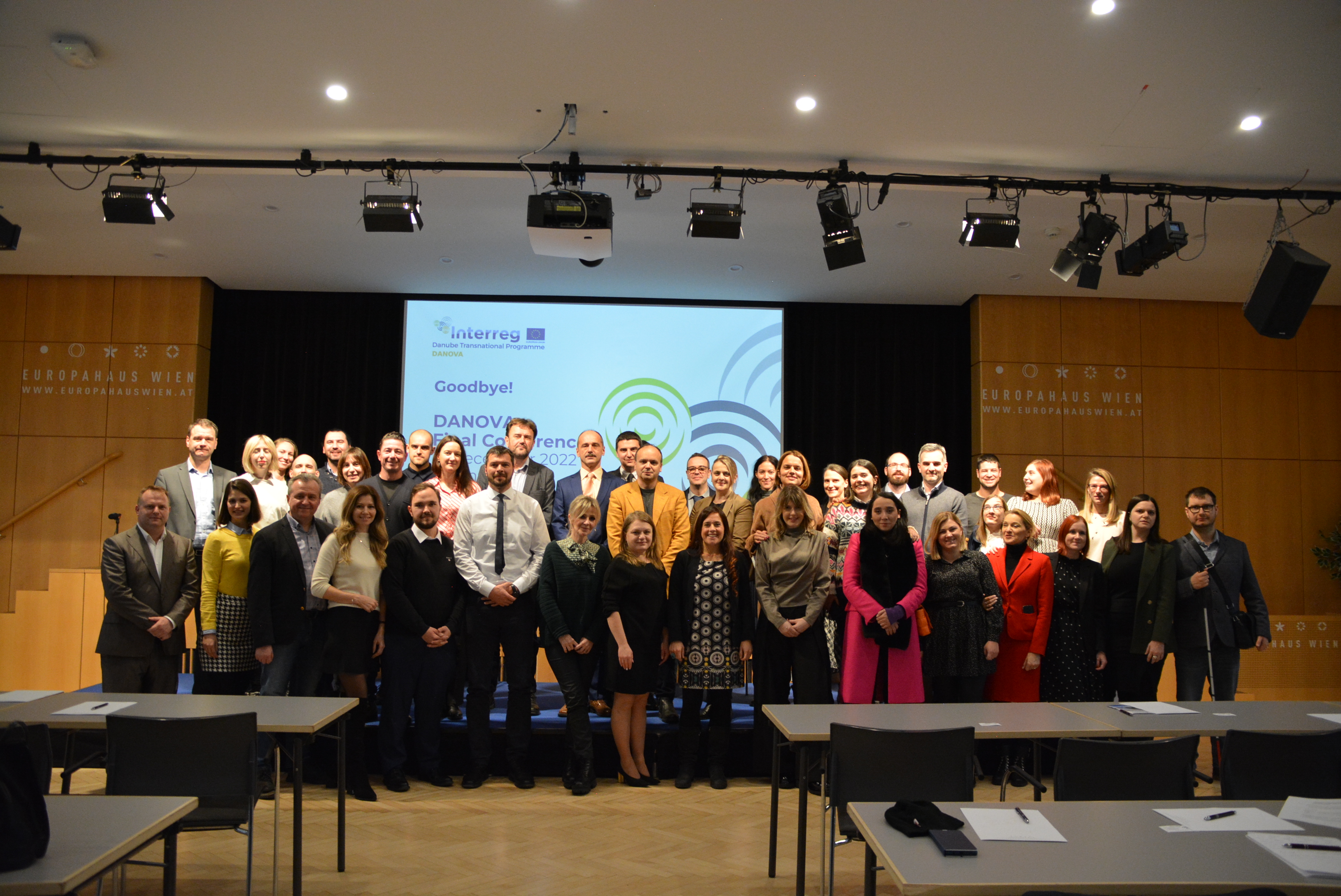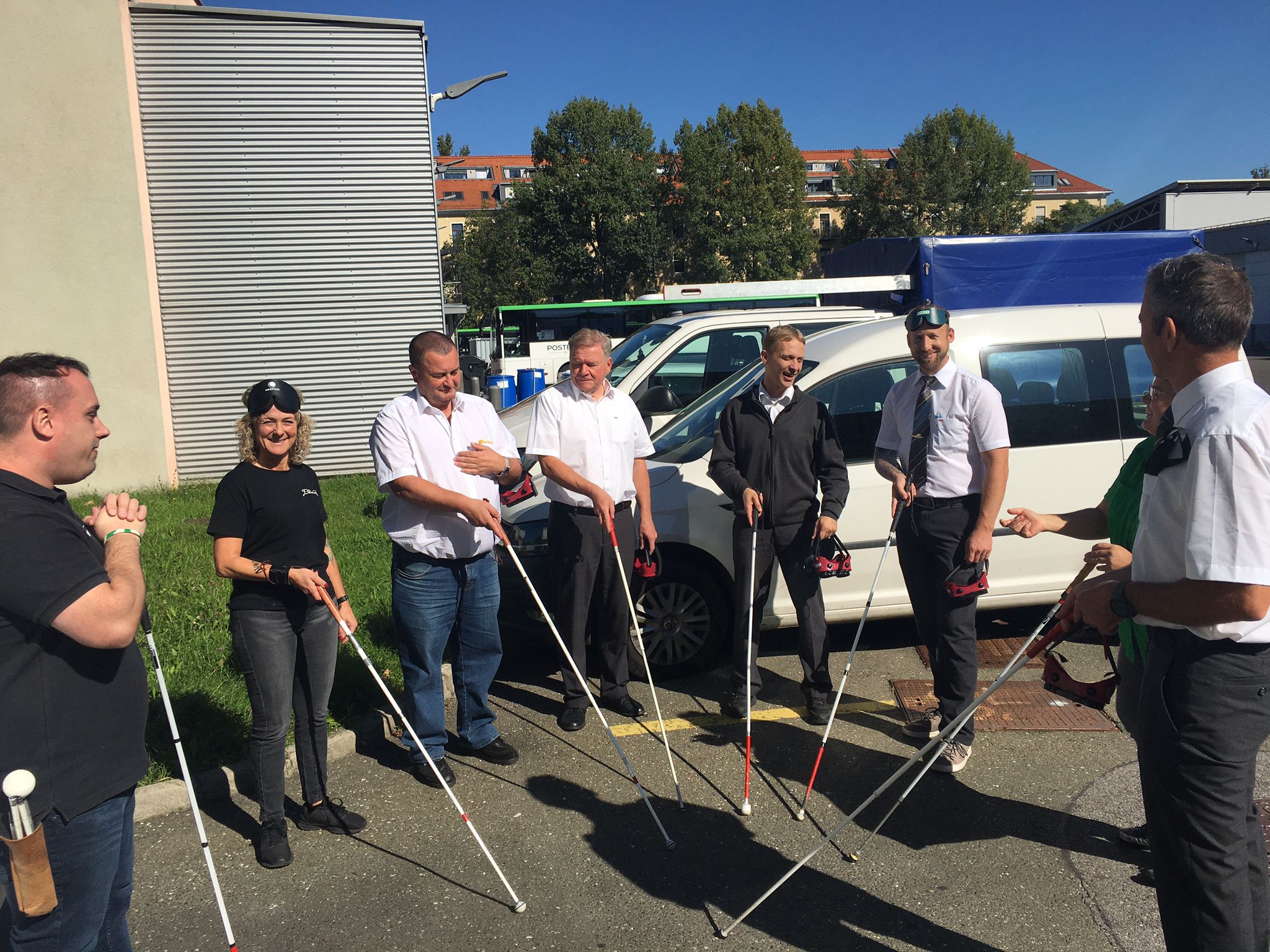Breaking Barriers: The Danova Project's Vision for Inclusive Transportation Access
26-09-2023
In our last "Danube Diaries" interview about the results of projects supported in 2014-2020 programming period, we had the privilege of speaking with Hrvoje Spremić, Assistant General Manager at Dubrovnik Airport, to delve into the impactful Danova project. This initiative has set its sights on a commendable goal: enhancing the accessibility of airports, seaports, and train/bus stations for individuals who are blind or partially sighted. Across Europe, this endeavor resonates profoundly, addressing the pressing challenges faced by this community. Astonishingly, over 96% of the European transport system, particularly in the Danube Region, remains largely inaccessible to those with visual impairments. This lack of accessibility has left countless blind and partially sighted passengers struggling, and, at times, unable to utilize conventional modes of transportation such as airplanes, railways, and public transit. In our conversation with Mr. Spremić, we explore the crucial work being done to bridge this accessibility gap and make travel more inclusive for all.
September 26, 2023
The training conducted by the the Austrian Federation of the Blind and Partially Sighted in Vienna.
HOW HAVE THE PROJECT RESULTS BEEN USED?
The project brought a great added value both to the involved stakeholders and indirect beneficiaries (blind and partially sighted persons) that, thanks to the project, instead of being considered as “discriminated passengers to be assisted” are now approached as citizens who can travel independently and use all offered services as other passengers without disabilities, since the main constraints & gaps in the services provided have been significantly reduced. The transnational concept for fully accessible transport infrastructure and training models for personnel, as some of the most important project outputs, are designed to be applicable in each local / regional / national context for every kind of transport service offered and can be used by transport service providers and replicated in their own environment.
Additionally, accessibility assessment methodology, catalogue of best practices, capitalisation strategy, and transnational pilot action evaluation reports as well as all other project deliverables, available on INTERREG Danube DANOVA official page, can be used by every transport facility in improving their own infrastructure accessibility. These project results provide indispensable elements and data to design and implement new services targeted to visually impaired passengers as well as to identify solutions that can be easily and successfully transferred and adapted to local / regional contexts. This will reduce the risk of investments for transportation providers and enhance the chances of success.
WAS THE PROJECT'S IMPACT ON POLICY MAKING AS EXPECTED?
At all the meetings where project DANOVA outputs and pilot actions were introduced, the stakeholders gave valuable input improving each output in order to better meet policy requirements and to be able to use it for possible policy improvements. At final conference representatives from partners national public authorities, research institutes, European disability forum (umbrella organisation of person with disabilities across Europe), European consumer voice in standardisation (ANEC), European Mobility Atlas, European Blind Union and many more were present and shared their views in respect of the accessibility of infrastructure for blind and partly sighted people and discussed areas for improvement.
During the project life-cycle much more target groups were reached than originally planned especially on policy makers level where total of 53 policy makers on local / regional / national level were reached (25 planned). With that mentioned, DANOVA project's impact on policy making and raised awareness in policy makers regarding the accessibility for blind and partly sighted people was more than expected.
HAVE THE PROJECT RESULTS INFLUENCED POLICY DECISIONS OR LED TO ANY CHANGES IN THE FIELD?
The DANOVA project enabled blind unions to reach out to various policy makers and enter into a dialogue with them. Especially the final conference in Vienna was a very good opportunity. For example, BSVO (Austrian Federation of the Blind and partly sighted) could talk about their issues with representatives from the Austrian Ministry of Transport and, during the preparation of the conference, get message through to EU level decision makers. As expected, no immediate policy changes resulted from that, but BSVO could establish their organization as a respected partner for future discussions about policy changes, which is a very valuable outcome. Similar influence has been reached also by Croatian Blind Union who, at regular stakeholder meetings introduced Croatian policy makers about difficulties that people with disabilities are facing and involved themselves in future discussion about policy changes.
Also, transnational training was performed in Budapest for partners employees, policy makers and other stakeholders in dealing with blind and partly sighted people in order to raise awareness among stakeholders and improve level of service of involved partners.
Additionally, influence was also applicable to local / regional level considering that we engaged different stakeholders, including decision makers, in different stages of project implementation and presentation of results. Awareness-raising activities as well as visibility and communication activities also contributed to the implementation of new practices and work policies. In this regard, the positive example is the introduction of the tailored made staff training on a yearly base by the Dubrovnik Airport for staff getting in direct contact with passengers with disabilities. Moreover, our educational workshops inspired both partners and involved stakeholders to consider changing existing internal policies and practices, as well as physical environment of transportation facilities in favour of the major accessibility for persons with disabilities.
WAS THERE ANY RESISTANCE OR CHALLENGES IN INCORPORATING THE PROJECT RESULTS INTO YOUR WORK?
During the project implementation none partner faced resistance to implement project results in their own environment, management of each partner was keen to improve accessibility of infrastructure to blind and partly sighted passengers and to implement as many identified measures as possible within given budget. However, partnership has to dealt with many challenges during the project life-cycle.
The lack of awareness and knowledge among stakeholders about the needs of people with disabilities, as well as a lack of political will to address accessibility issues, was one of the most significant challenges encountered. This necessitated a significant investment in stakeholder engagement and awareness-raising efforts by the project team, which included the creation of guidelines, trainings, and stakeholder meetings. It is necessary to sensitise management and operational staff to these issues if we are to make progress, this is why local engagement activities, local trainings and testing site visits were really relevant.
Another challenge was the Danube region's lack of standardization and harmonization of accessibility regulations and standards, which made developing a unified framework for the project difficult. Nonetheless, thanks to the partnership's careful planning, we were able to identify best practices and create a flexible framework that could be tailored to different contexts across the region.
The lack of awareness and knowledge among stakeholders about the needs of people with disabilities, as well as a lack of political will to address accessibility issues, was one of the most significant challenges encountered.
WHY DO YOU THINK INTERNATIONAL COOPERATION IS NECESSARY AND IMPORTANT FOR THE TOPIC YOU WERE SOLVING IN THE PROJECT?
Considering the main outputs of the project (Capitalisation strategy, Transnational concept, pilot implementations and training models) and transnational cooperation between project partners, transport authorities and operators, policy makers, experts and organisations representing visually impaired people that was needed to achieve these outputs, international cooperation was necessary and project transnational impact is remarkable. But with further dissemination of the knowledge, tools and achievements of the project in the Danube region and beyond, the impact can be even greater. Uniform approach to accessibility of transport for visually impaired passengers paves the way towards removing barriers and providing same levels of service across DANOVA countries and in the Danube region. Implemented activities have led to common understanding of problems and solutions whereas without the project, mutually inconsistent approaches would be deployed. All these achievements would not be possible without international cooperation neither would project results be able to reach such wider audience nor project results would be harmonised to meet transnational criteria.
WHAT ARE THE MAIN PRODUCTS AND OUTPUTS OF THE PROJECT AND PARTICULARLY IN CROATIA?
DANOVA partnership implemented wide range of measures within its pilot action: installation of tactile walking surfaces (TWSis) within ports, airports and urban public transport areas; innovative navigation assistive technologies that were implemented within Budapest Airport (BindiMaps indoor navigation software); webpage / apps accessibility and development; Braille signage on sanitary facilities; colour contrast stripes or visual signage and info sharing displays; acoustic signal for traffic lights.
In Republic of Croatia, Dubrovnik Airport has significantly improved its accessibility of infrastructure by installing TWSis (total of 387 metres of new TWSis were installed) in landside and airside area and especially by performing several trainings of DBV operative staff in dealing with blind and partly sighted. Training model developed will be used each year. Also, in DBV and Dubrovnik Port authority web page has been adapted to be accessible for blind and partly sighted passengers.

Danova project final conference in Vienna, Austria on December 2022.

